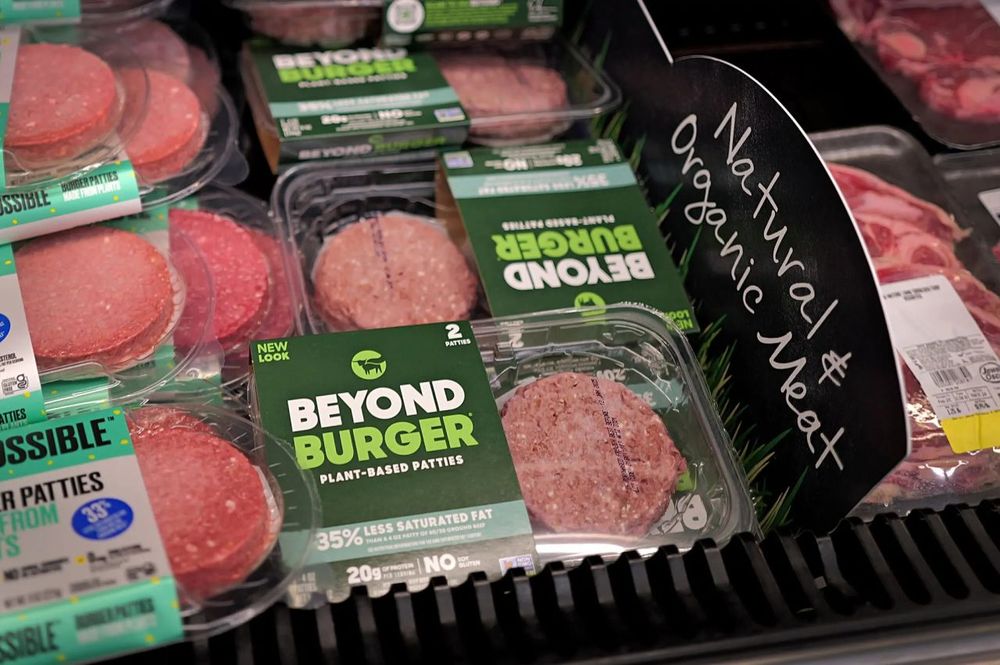Check out @gfi.org’s new report on #plantbased food sales in foodservice & restaurants, including insights like...

Check out @gfi.org’s new report on #plantbased food sales in foodservice & restaurants, including insights like...
www.theatlantic.com/ideas/archiv...

www.theatlantic.com/ideas/archiv...

Here are 7 benefits from my colleague Pat McAuley in Protein Production Technology, from a convo he had with @lizspecht.bsky.social on a @gfi.org webinar:
shorturl.at/tvjBl

Here are 7 benefits from my colleague Pat McAuley in Protein Production Technology, from a convo he had with @lizspecht.bsky.social on a @gfi.org webinar:
shorturl.at/tvjBl
sf.gazetteer.co/some-pig

sf.gazetteer.co/some-pig
news.mongabay.com/2025/08/will...

news.mongabay.com/2025/08/will...
gfi.org/resource/tec...

gfi.org/resource/tec...
Fermentation-derived ingredients promise functionality, flavor, and sustainability. But what are the economic realities behind this potential? We partnered with Hawkwood Biotech to find out.
Here are the top takeaways from our latest analysis 👇

Fermentation-derived ingredients promise functionality, flavor, and sustainability. But what are the economic realities behind this potential? We partnered with Hawkwood Biotech to find out.
Here are the top takeaways from our latest analysis 👇


Egg price volatility isn’t a fluke—it’s a pattern. As outbreaks continue to disrupt supply chains, food companies face a clear question: How will you future-proof your operations?
www.fooddive.com/news/eggs-bi...

Egg price volatility isn’t a fluke—it’s a pattern. As outbreaks continue to disrupt supply chains, food companies face a clear question: How will you future-proof your operations?
www.fooddive.com/news/eggs-bi...
www.theguardian.com/environment/...

www.theguardian.com/environment/...
apnews.com/article/nebr...

apnews.com/article/nebr...

nebraskapublicmedia.org/en/news/news...

nebraskapublicmedia.org/en/news/news...
Provide research, insights, and narratives to motivate and educate the food industry to prioritize alternative proteins.
Job listing: gfi.org/job/?gh_jid=...

Provide research, insights, and narratives to motivate and educate the food industry to prioritize alternative proteins.
Job listing: gfi.org/job/?gh_jid=...
Health drives consumer interest. Taste & price can be real barriers to folks.
👉 thegoodfoodinstitute.substack.com/p/how-to-bui...

Health drives consumer interest. Taste & price can be real barriers to folks.
👉 thegoodfoodinstitute.substack.com/p/how-to-bui...
📖 thegoodfoodinstitute.substack.com/p/how-to-bui...

📖 thegoodfoodinstitute.substack.com/p/how-to-bui...

trellis.net/article/lidl...

trellis.net/article/lidl...
www.nytimes.com/2025/01/16/c...

www.nytimes.com/2025/01/16/c...
40% say they are going to attempt to eat fewer calories.
26% say they plan to go low-carb.
7% say they plan to go plant-based.
www.pcrm.org/news/news-re...

40% say they are going to attempt to eat fewer calories.
26% say they plan to go low-carb.
7% say they plan to go plant-based.
www.pcrm.org/news/news-re...
www.newhope.com/food-and-bev...

www.newhope.com/food-and-bev...
1) Functional protein: Plant-based positioned protein powder sales are up 11% in the last year, according to SPINS.
1) Functional protein: Plant-based positioned protein powder sales are up 11% in the last year, according to SPINS.
Great insights on sustainability and B2B vs. B2C in this interview between @goodfoodinst.bsky.social’s Daniel Gertner & Monitor Deloitte’s Mathias Cousin. @deloitteinsights.bsky.social

Great insights on sustainability and B2B vs. B2C in this interview between @goodfoodinst.bsky.social’s Daniel Gertner & Monitor Deloitte’s Mathias Cousin. @deloitteinsights.bsky.social

